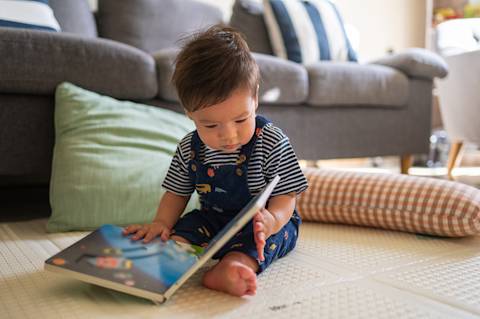“No, I want dad to tuck me into bed!” “Mom always makes me lunch!”
As caregivers, many of us have experienced children preferring one parent over another. Being the non-preferred caregiver can really hurt our feelings, while being the preferred caregiver can start to feel exhausting. The good news is that caregiver preference is often just a phase in a child’s development journey, and there are several different ways the non-preferred caregiver can deepen their bond with their child.

Childhood development can be categorized into various stages, each with unique characteristics and behaviors. During the attachment phase, which mostly occurs between 7 months and 3 years of age, children rely on their caregivers to meet their emotional and physical needs. There are many reasons why children in the attachment phase can develop a preference for one caregiver:
Primary caregiver: In the earliest months, infants often show a preference for the primary caregiver who caters to their basic needs like feeding, diaper changing, and soothing. This can happen because they associate that caregiver with food, security, and affection.
Attachment styles: Attachment styles can influence a child's desire for comfort or reassurance from one parent over the other. For example, children with secure attachments to their primary caregiver tend to feel safe when separated from that person. They often trust that their primary caregiver will return, so they can be separated from them for short time periods without experiencing fear or anxiety of being apart. Whereas, those with insecure attachments may not feel safe when they’re separated from their primary caregiver, which can lead to caregiver preferences. Read more about ways to help your child develop a secure attachment to their primary caregiver.
One-on-one time together: As children grow, their preferences may change depending on their activities or the interests they share with a parent. Children may start to prefer the caregiver who does activities with them that they enjoy the most.
Separation anxiety: Around 8 to 14 months, some children experience separation anxiety, which may make them cling to the primary caregiver who attends to their basic needs and spends a lot of one-on-one time with them. This temporary phase is usually a normal part of growing up and should lessen as the child gets older.
Gender identification: Around 3 to 4 years old, children may develop a preference for the parent who most matches the child’s identified gender role and identity. This preference might change as they grow and identify with each caregiver in different ways.
The impact of developmental stages on a child's preference for one parent will vary from child to child. These preferences will likely change as the child grows and develops. However, there are many ways that the non-preferred parent can deepen their bond with their child.
Spend one-on-one time together: Take time each day to do activities with your child that they enjoy. This helps create a warm and nurturing environment for bonding. If you’re looking for new activities to do with your child, check out these ideas.
Show physical affection: Hug, cuddle, and hold your child. Physical touch helps build a sense of security and emotional connection. There are many different ways to show your child affection. Read more in our previous article.
Be consistent and predictable: Children feel safe when they know what to expect. Offer consistent routines, and communicate openly and honestly with them.
Share your interests: Connect by introducing your hobbies, skills, or favorite activities to your child.
Actively listen: Show you genuinely care about your child's thoughts, experiences, and ideas by actively listening and asking questions.
The preferred parent can also play an essential role in nurturing the bond between the child and the non-preferred caregiver.
Encourage the non-preferred parent's involvement: Support your partner's participation in daily routines by taking turns or sharing responsibilities. It can be helpful to explain in child-friendly terms why the other caregiver will be involved in the activity or routine. For example, you can try saying, “[Caregiver] loves you so much and wants to spend more time with you. We’re going to take turns reading to you at bedtime so we can both spend time with you.”
Include your partner in the conversation: Include your partner when discussing your child's day, achievements, or concerns. This can help the non-preferred caregiver get to know the child better. It can also open up new ways for them to get involved in their child’s life.
Reinforce the non-preferred parent's importance: Highlight the positive qualities your child shares with the other parent, and express gratitude toward the non-preferred parent for their efforts. For example, you can try saying, “[Caregiver] is so excited to play with you outside. They love playing with you and spending time together. You’re going to have so much fun together! And I’ll be waiting for you right here when you’re done.”






